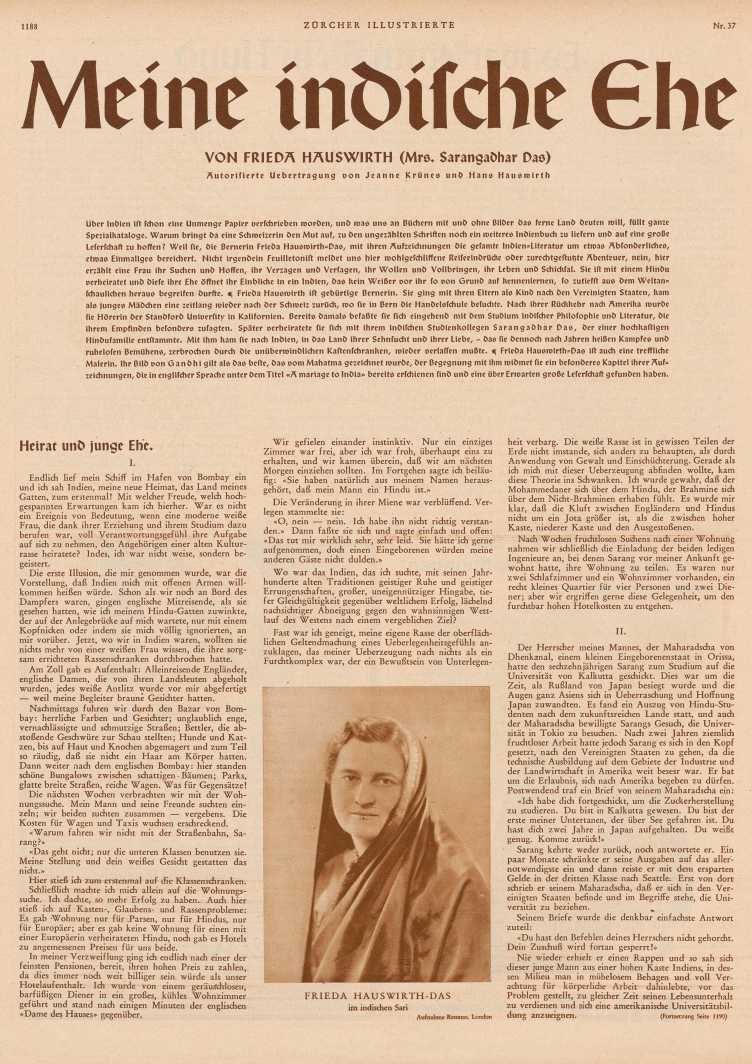Claire Blaser

A global biography: Frieda Hauswirth Das (1886-1974) between Switzerland, California, and India
(SNF)
This project reconstructs the life and legacy of Frieda Hauswirth (1886-1974), a female Swiss intellectual and political radical active in North America, India, Britain and Switzerland during the first half of the 20th century. The research on the ‘global biography’ of this accomplished artist and author seeks to unpick the broader historical and political stakes involved in anticolonial organising between colonial India and ‘colonial Switzerland’ as well as the particularity of the Swiss neutrality trope. By studying Hauswirth’s role as a ‘colonial outsider’ in the context of her ‘Swissness’, it intends to shed light on the internationalist dimension to the idea of ‘neutral’ Switzerland. It also considers the influence of Hauswirth’s nuanced depictions of modern India, which she exhibits in her art and writing, on Swiss imaginaries of India in the 1930s, 40s and 50s.
As the first systematic inquiry into the life of Frieda Hauswirth, the project uses a diverse set of previously unstudied archival sources. The rich legacy of Hauswirth includes her numerous books, articles, paintings, drawings, and correspondence with prominent transnational intellectuals of the early 20th century. Methodologically, the research combines an gendered perspective informed by critical race and postcolonial studies with a global history approach. It thus thinks beyond the limitations of conventional historiography framed by national or imperial geographies that is unable to account for transgressing life trajectories such as Hauswirth’s. The textual and visual analysis is structured around three main analytical axes – Swissness/nation, feminism/gender, imperialism – with a view to further understanding about the presence of India (real and imaginary) in Switzerland, the intersectional politics of early transnational feminist solidarity, and global imaginaries of Switzerland as a ‘colonial outsider’ in the late Imperial period.